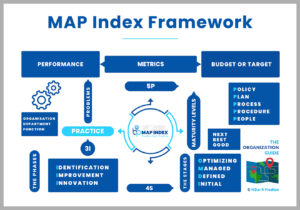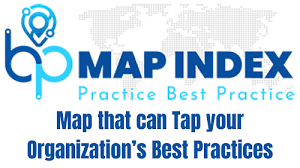Knowledge is of no value unless you put it into practice — Anton Chekhov
There are multiple elements to the practice of management. The primary aim of management practice is to map the business performance. It is to establish a strong relationship between the various practices and performance of business. We need to better know the fundamental elements that make up the constitution of management. There are these elements prescribed in the management books. We read and learn those elements. But these are rudimentary in nature, theoretical in perspective but there is so much more practically needed that gets played out in the workplace.
How to put those theories into practice?
We have to learn a whole lot of things while being on the job and doing the managerial tasks. The task on hand while being hands on, is what, makes management learn the vital tips and critical tricks of managing things in a much defter manner and doing so things in a definitive way.
Planning is an element of management but there are so many facets to the process of planning that we cannot put it to a jacketed template. And apply the same formula to so many different conditions and diverse situation that arises in running a complex business. The very nature of business is dynamic. The complexity of business is changing in such rapidity that it is making existing means and methods quickly to go out of work.
As a business owner we may know something about planning and we may gain some more knowledge about strategic planning by reading stuffs and getting trained on the subject. That can make us do so much justice to the planning process but for the business to strive and thrive, we need to expand our broader horizon of planning. Not just draft a short term plan but we need to craft a long-term plan for our business success. Not just a strategic plan will do but we need to deftly craft an operational plan as well to support our strategic intent to work. Not just have a resource plan but how to ensure that those planned resources are properly deployed.
How to constantly build that efficiency in execution?
Planning needs data and how to collect correct data and analyze those data to get the insights. Planning needs certain assumptions to be place and how to set those assumptions, and what to do when the assumptions goes off-track and we are offloaded, how to get back on course. The foundational element of management is structuring – designing the organization structure that will house the business setup.
The organization structure is not just about the various roles, responsibilities and reporting but much more than the ‘3R’ that usually gets played out in the broader arena of business strategy. Sometimes it is the strategy that drives structure, other times there is this role reversal. There is latent layering to organization structure and that gets manifested in terms of “span of control” to “span of influence” to “span of support”.
Just designing an organization structure with the use of “3R” will not suffice the full requirement of designing of a strong organization. These very nuances are rarely explained in full perspective in the management classes though they get touched upon and the definitions get played out. The case studies help and the role play open up some more perspective.
But the meat of the matter remains rather disguisedly hidden and it is then left to the managers to uncover and discover such vital links while being on the job and learning the everyday challenge of discharging the work as an important jobholder. As a jobholder, to get the job done they need to get the maximum support from others and many times they need to exercise their influence to get things done.
Getting things done is the craft of any manager and they have to keep honing their craft…
The organization design is much more to setting the organization structure and rolling out the job description and expecting the job to get done. Along with responsibilities come the authority, and how much is to be delegated and how much is to be controlled determines the strength of the various elements of organization design. The elements of management are how we organize the functions in the company.
We have different functions, and we group them based on their common characteristics to get the overall work done well. We have admin and human resources as function. We have finance and accounting as function. We have sales and marketing as function. We have information technology as function. How to organize and group these functions based on the business requirement which functions need to be given priority over the other and for what period of time matters, and how to shift the plank of priority for functions so that it can strike a proper balance. The conventional mode of grouping will not always suffice the need of contemporary ways of working in organization, as new methods are needed and newer technologies are changing the way functions are getting regrouped and realigned.
With functional specialization taking the space from generalization, broad grouping of functions are giving way to sharp focus on key functional areas in business organization. The customer relationship management to customer experience becoming the thrust specialized functional area. The data collection management to data analytics are becoming the thrust specialized function area. These sub-functions are branching out of the main truck of the organization tree and they are establishing their little niche play in the functional design of organization.
Similarly so, the competency mapping and skill development is becoming a separate function given the importance of skill upgradation with the growing need for re-skilling to up-skilling and down-skilling of employees. Also, the various aspects of risk management and statutory compliances is becoming a separate function to face the growing uncertainties and fast changing regulatory matter affecting the functioning of businesses more than ever before.
The element of communication in management remains such a vital part but it is always starving and the communication gap is what puts business in dire state but something not stated well in the management circle. This is something largely known but the messaging problem not acknowledged in the same stretch. It is predominately driven by informal mode of communication, many things get lost and the formal mode of communication stays in the backburner. There is this towering tussle, classic in nature constantly at play between the formal mode and informal channels of communication in organization.
Communication is the bedrock of any management. The ship rocks when communication is poor. It has the potential to rock the boat and turn the business upside down. There are many dimensions to the communication management in organizations. It is the communication that flows vertically (top-down) and horizontally (left-right) in the organizational hierarchy.
- What are the best practices in making the communication from management to employee that much more effective?
- How to establish a communication system with best practices across the organization?
With digital technology at the forefront of communication management no management can shy away from embracing the latest technology augmenting the modes of communication.
Generally, the communication angle in organization is largely taken for granted and not given the significance it demands for and how much of a big difference it can make when good communication practice is adhered to by management. How much time, management gives in analyzing the communication it makes and how effective it is in the communication strategy.
In it comes the key role of feedback and feed forward, do we practice such thing and what changes we have brought in our communication channel and channelizing the various ideas in the right way that can take the idea far and make it workable. But a bad communication can completely ruin a good idea and leave the team highly de-motivated, if repeated and they have no recourse to get home their good ideas on course.
These are such vital elements of management but management gets swayed and distracted by many other things from product failures to market decline to financial losses as these are tangible and visible. But these intangibles affect the tangibles. There are so many more aspects to the dimensions of management that are intangible in nature and largely invisible, unless we put on the ultraviolet rays or infrared glasses to purview outside the view of naked eye, the visible bandwidth.
There are many things happening just that we cannot see it doesn’t mean those things will not be affecting our business performance, it does in various ways and it depends so much on our aspects like communication practice. We practice good communication we perform better. These are some elements of management which are so vital and if put in proper place it revitalizes the running of business and management can experience the instant and constant performance.












